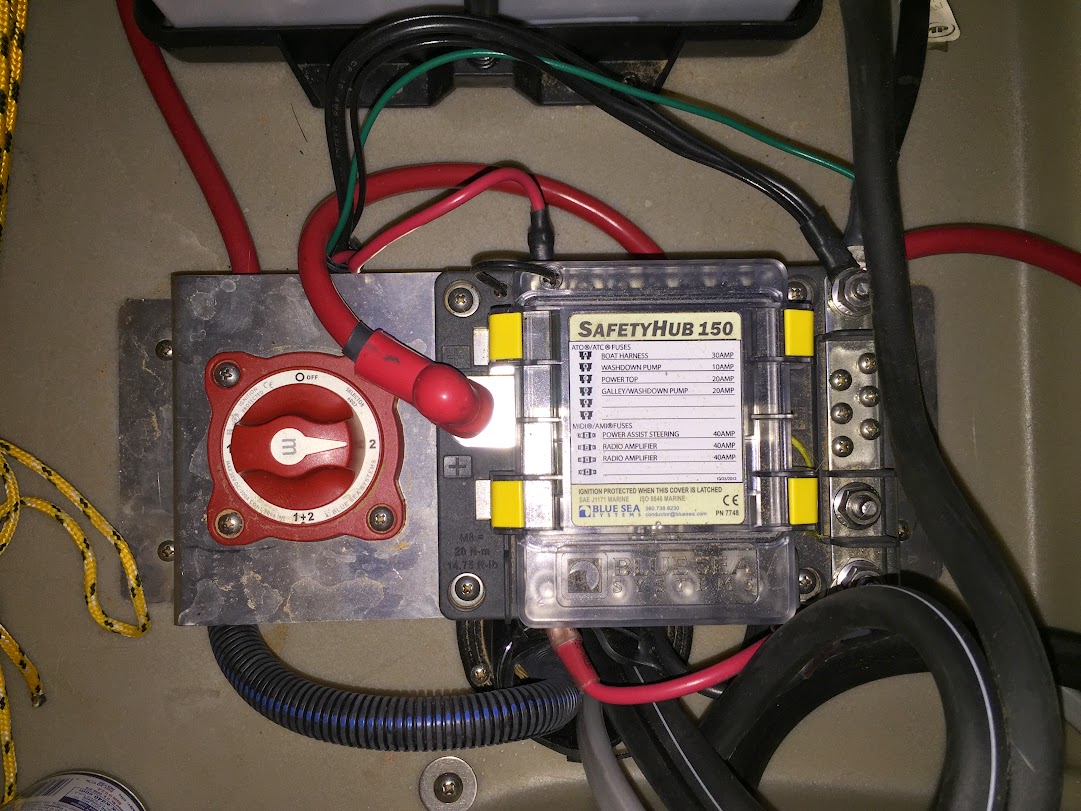I picked up a Yandina C100 combiner a couple months ago and I need to install it on my boat. I'm a little confused though, and I'm hoping someone here can help straighten me out. For some reason I feel totally competent rewiring my entire home in high and low voltage including keypads and speakers in every room, but battery wiring confuses me. I've been looking over the Yandina instructions here: http://www.yandina.com/acrobats/C100Data.pdf
What I'm having trouble with is how that correlates to the 1+2 switch and the Safety Hub 150 I have. Do I need another switch in there somewhere to make this work? The wiring coming out of the Yandina is so simple that I think maybe I'm just overthinking this. Any help would be much appreciated.

What I'm having trouble with is how that correlates to the 1+2 switch and the Safety Hub 150 I have. Do I need another switch in there somewhere to make this work? The wiring coming out of the Yandina is so simple that I think maybe I'm just overthinking this. Any help would be much appreciated.

